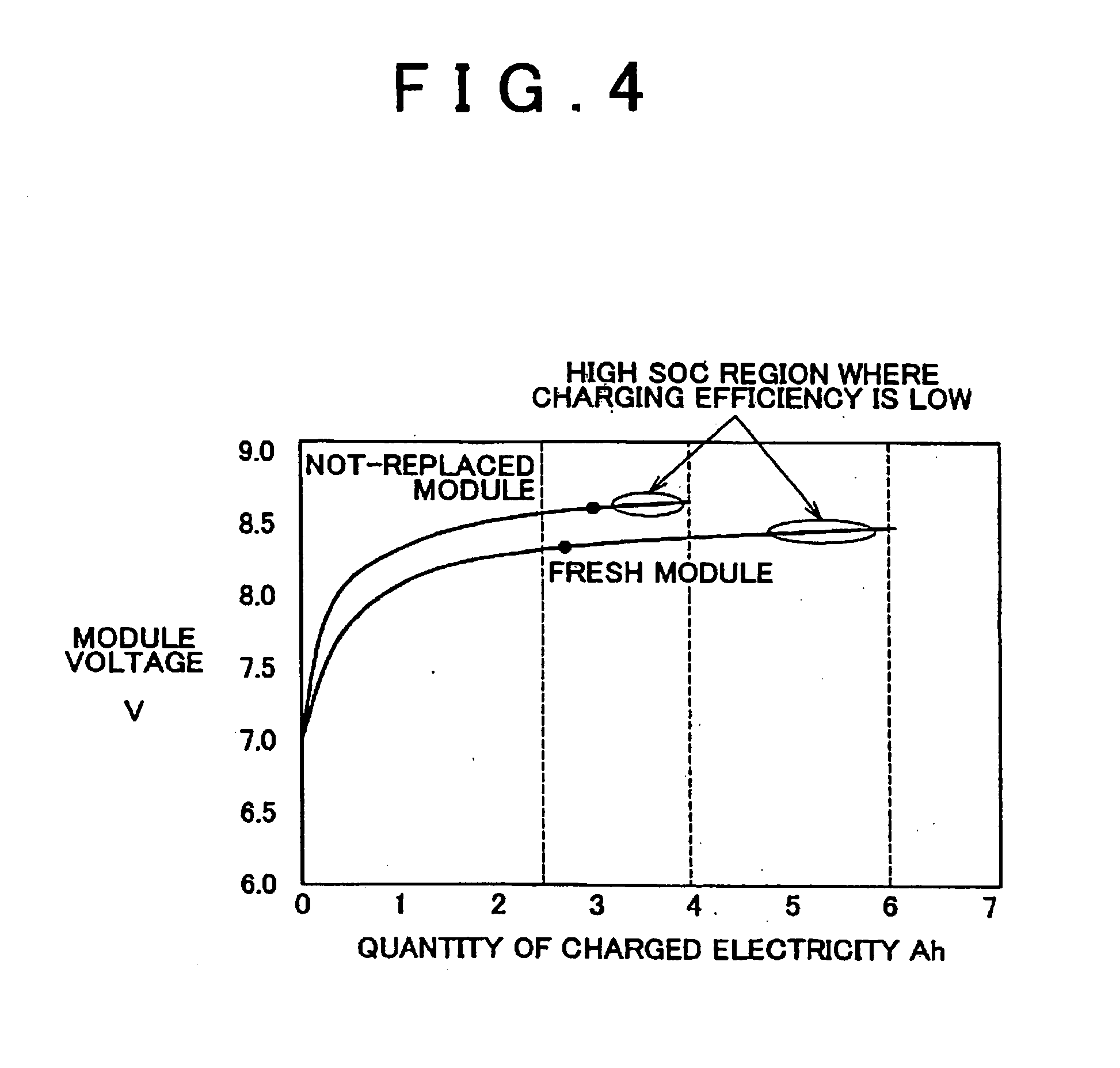Secondary battery replacement method
a battery replacement and secondary battery technology, applied in secondary cell servicing/maintenance, nickel accumulators, instruments, etc., can solve the problems of system malfunction, battery assembly individual abnormalities or reaching the end of service life one, battery assembly cannot perform normal functions, etc., to avoid false detection of battery abnormalities and allow maximum performance of battery assemblies
- Summary
- Abstract
- Description
- Claims
- Application Information
AI Technical Summary
Benefits of technology
Problems solved by technology
Method used
Image
Examples
Embodiment Construction
[0025] Preferred embodiments of the invention will be described hereinafter with reference to the accompanying drawings. In the description below, like components are presented with like reference characters. Such like components are provided with the same names, and perform the same functions. Detailed description of the like components will not be redundantly given.
[0026] The “secondary battery” in the invention refers to a mono-block type battery module formed as a battery assembly by a single unit cell or by internally connecting a plurality of unit cells. The “secondary battery” in the invention is not limited to secondary batteries in a battery assembly which are electrically connected in series or parallel, but also includes secondary batteries in a battery assembly system which are combined in series or parallel.
[0027] In conjunction with an embodiment of the invention, a Ni-MH secondary battery, that is, a type of alkali secondary battery, will be described. Presented as ...
PUM
 Login to View More
Login to View More Abstract
Description
Claims
Application Information
 Login to View More
Login to View More - R&D
- Intellectual Property
- Life Sciences
- Materials
- Tech Scout
- Unparalleled Data Quality
- Higher Quality Content
- 60% Fewer Hallucinations
Browse by: Latest US Patents, China's latest patents, Technical Efficacy Thesaurus, Application Domain, Technology Topic, Popular Technical Reports.
© 2025 PatSnap. All rights reserved.Legal|Privacy policy|Modern Slavery Act Transparency Statement|Sitemap|About US| Contact US: help@patsnap.com



